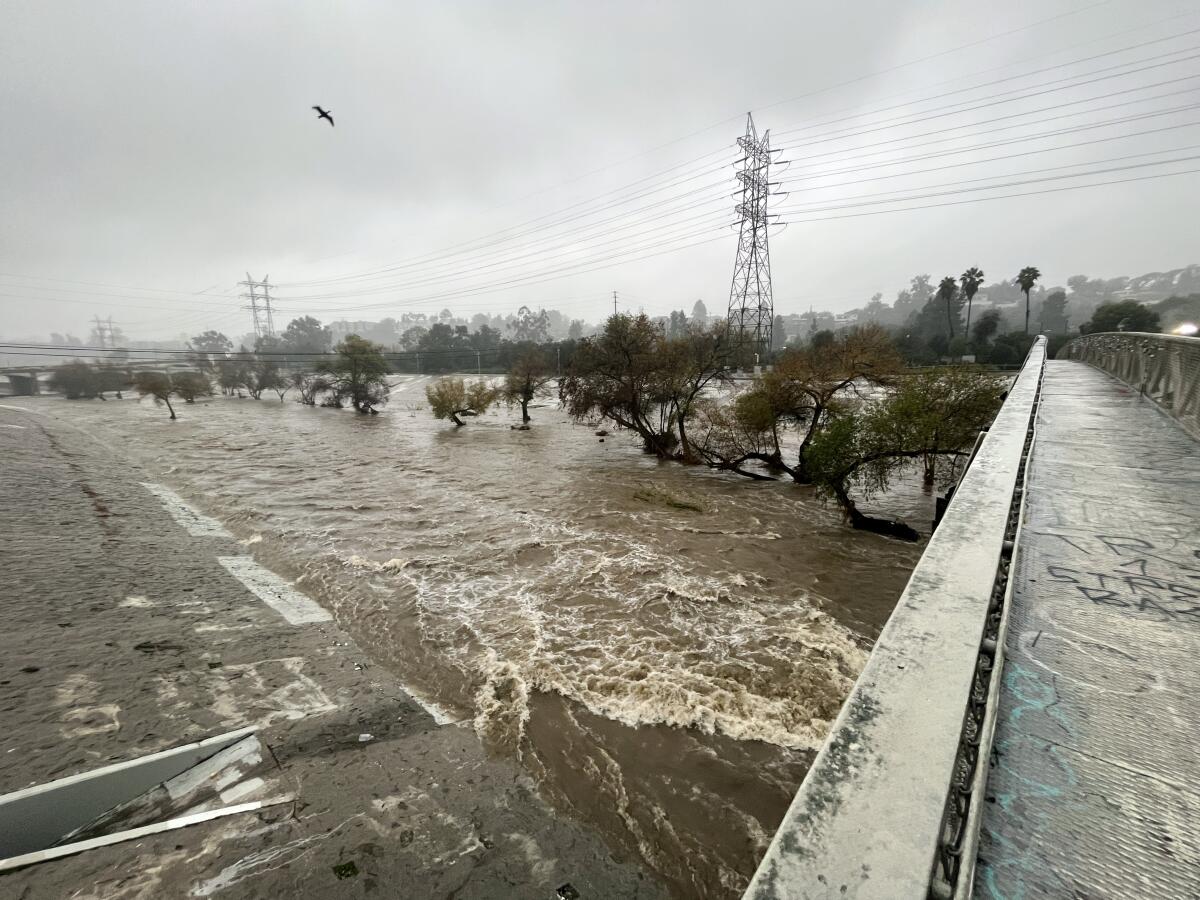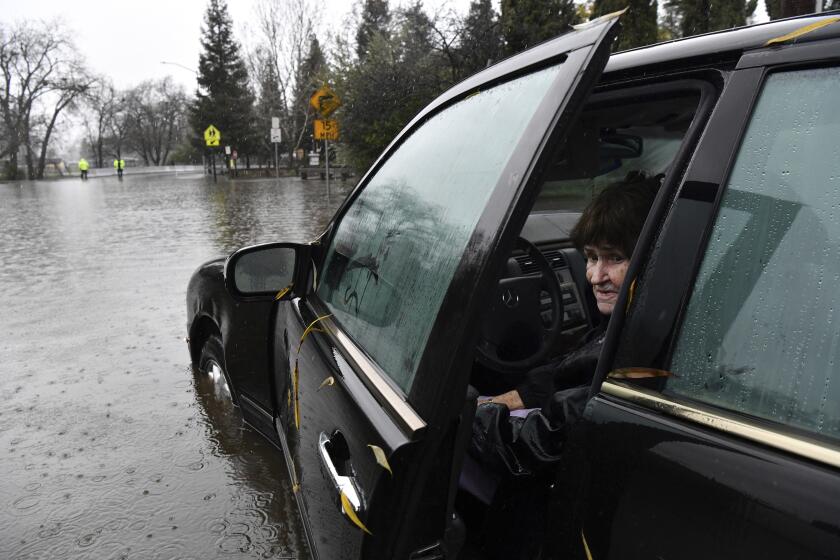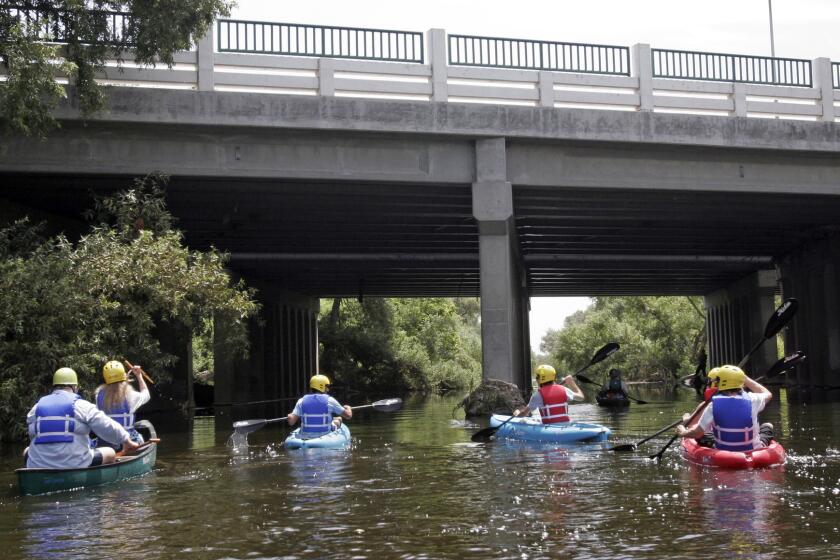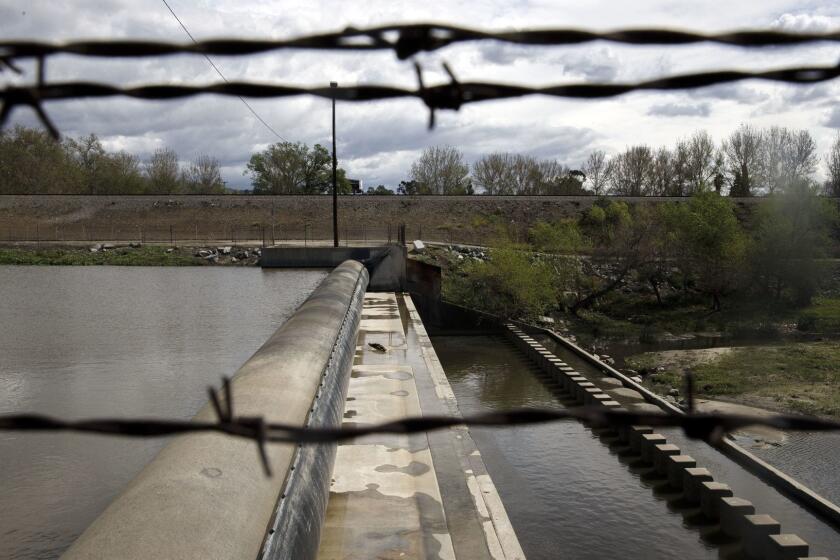Editorial: L.A. doesn’t need a water czar to solve its water woes. It’s already on it

- Share via
The recent onslaught of storms and the backdrop of relentless drought might make Los Angeles residents wish we had an old-school water czar to tap distant rivers. But the days of having William Mulholland single-mindedly create a system to quench Los Angeles’ perpetual thirst are long gone. We don’t need them back.
Still, as Los Angeles residents watched the winter storms drench the region with billions of gallons of water — most of which rushed, unused, to the Pacific — it’s natural to wonder why our water systems don’t capture that water to use when we need it.
We don’t have a Mulholland-like water czar to ram through projects to contain stormwater, recycle wastewater and desalinate ocean water — nor would that be workable.
Even as California gets yet another atmospheric river blast and snowpack nears twice the average for this date, we’re still in grave danger of running out of water.
What we have is Los Angeles County’s Safe Clean Water Program and its chain of scoring committees, watershed steering committees, oversight committees, advocacy committees, consultants and, of course, politicians. (Mulholland’s contempt for committees and bureaucrats led to his insufficiently reviewed design for the St. Francis Dam, which collapsed in 1928, killing more than 400 people, a consequence of having authority vested in one person.)
And despite what seems like a bureaucratic process, the program is doing its job, and doing it well. Rather than being the weakness in L.A.’s modern approach to water projects, the complex of committees, review and consensus-building is actually quite ingenious. The time the process takes, from proposal to completed water-capture project, pales in comparison with the time that otherwise would be sucked up by lawsuits brought by parties with a legitimate interest in the outcome but no seat at the table.
Adopted by voters in 2018 as Los Angeles County Measure W, the program is building a network of small, local rainwater- and runoff-retention projects, anchored by several larger catch basins that together will increase by at least a third the amount of water that seeps into groundwater basins. No surface reservoir could hold as much as underground aquifers can.
There comes a point in “Water and Power” — Richard Montoya’s 2006 play about two brothers, conspiracy, corruption and Los Angeles — when a shadowy “Fixer” steals the soul of a young Latino state senator.
Measure W created a parcel tax on impermeable surfaces, and the money is accessible to cities and agencies if they work together to achieve multiple goals, including increased green space and water storage. Before the Clean Safe Water Program, no city had any incentive to collect, clean or store water, but they did have looming, unaffordable fines from the U.S. Environmental Protection Agency for polluting urban runoff. The program satisfies the pollution liability, and as almost a side benefit it encourages stormwater capture.
Taken together with city and county recycling projects (currently in the preliminary stages), the region has the most advanced and forward-looking water resilience program in the nation. Northern California cities and counties have nothing like it, even on paper.
All of this should be as much a source of pride to Angelenos as a new aqueduct or reservoir. The participants in L.A.’s water capture programs can do a better job of getting the word out. Our need for water in the face of climate change and depleted distant sources is urgent. But we’re on it.
Los Angeles County Measure W is a parcel tax to pay for cleaning up stormwater — the dirty runoff created when rain hits the streets and other paved surfaces, picks up toxic urban gunk and carries it downstream to foul the beaches and pollute the ocean.
Things are different in the northern part of the state, which also has drought and flood challenges but has to actually increase its rivers’ flows to the ocean in order to sustain migratory species and keep the environment healthy. At the same time, Northern California needs to capture, store and recycle water. So far, it has nothing to match L.A.’s investments in such projects.
All that said, L.A. could use more vision and leadership in its water resiliency program. Each project that clears the various review hurdles is a modest piece of a puzzle — one that itself could be larger. Efforts and funding from county measures for homelessness, parks and transit could be better coordinated to conserve water as they transform Los Angeles County into a greener and more equitable network of communities.
A program to remove blacktop on school playgrounds could be leveraged with water and parks funds into a project that brings the community a park on weekends and after hours, and a catch basin and spreading ground for rainwater during a storm.
There are opportunities to broaden the approach. This year, the Board of Supervisors is required to begin its first biennial assessment of the Safe Clean Water Program and make adjustments. It should begin that process sooner in the year rather than later, and position it as part of what should be a more sweeping and integrated program to make Los Angeles a livable, abundant, just, green and resilient place beyond even Mulholland’s dreams.
More to Read
A cure for the common opinion
Get thought-provoking perspectives with our weekly newsletter.
You may occasionally receive promotional content from the Los Angeles Times.













